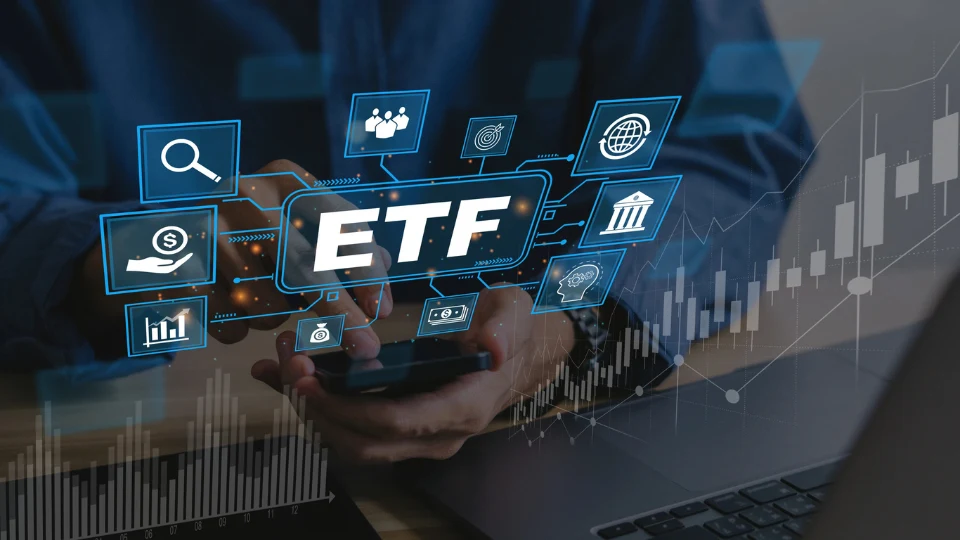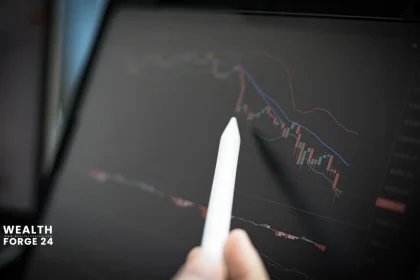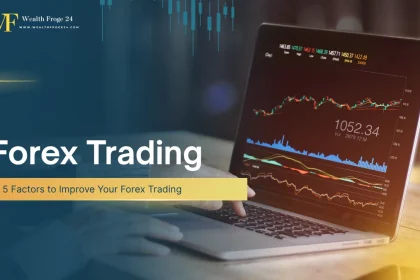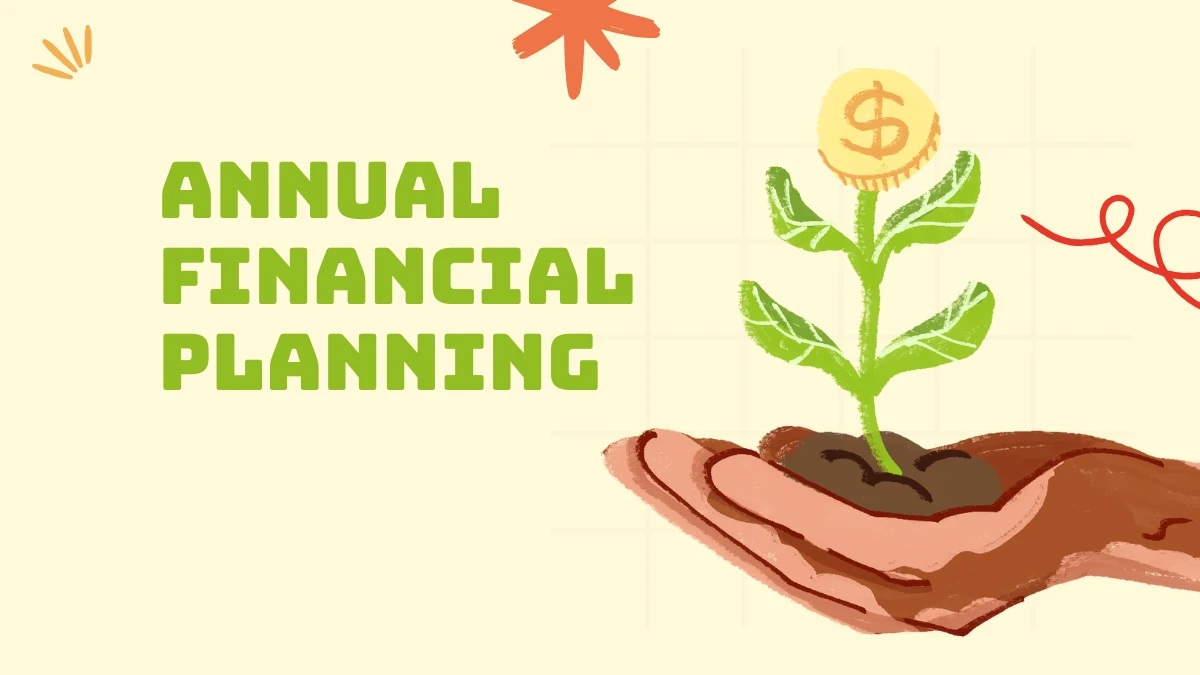Why ETFs Are Great for People Who Are New to Investing
Here’s something exciting: Exchange-traded funds (ETFs) are really one of the simplest methods to begin investing. You could say that they are the “set it and forget it” way to get rich. They’re easy to comprehend, don’t cost much, and can make you much money without you having to be a full-time trader.
What I like best is that you can buy and sell them just like you can with real stocks. Let’s talk about all you need to know about ETFs and how to start investing in them right now.
What Is an ETF, Anyway?
This is a simple way to put it: With an ETF, you can buy a diversified portfolio of stocks or bonds at once, all in one investment. When you acquire shares of an ETF, your money is invested in a specific way or for a particular purpose.
An Example from Real Life
You buy an ETF that tracks the S&P 500. Your money will be automatically spread out across all 500 companies in that index. That’s quite fantastic. This means that over time, your investment will do about as well as the S&P 500. With only one purchase, you’re buying a piece of some of the top firms in the US.
What is the difference between ETFs and mutual funds?
You might be thinking, “Aren’t mutual funds and ETFs basically the same thing?” That’s a great question! They both have the same basic idea of putting money together; however, there are some important differences:
How Mutual Funds Work
- Once a day, priced: Regardless of when you submit your order, you will pay the same price each day.
- Investing in dollars: You typically put in a specific amount of money, such as $1,000.
- Ways to buy: You can acquire them from a broker or directly from the fund company.
How ETFs work
- Trading in real-time: ETFs trade on major exchanges like the NYSE and Nasdaq, much like stocks.
- Investing in shares: You acquire a specific number of shares instead of investing a fixed sum.
- Pricing that never stops: The price changes during the trading day, which gives you greater control over when you enter the market.
Important ETF Ideas You Should Know
Before you buy your first ETF, let’s go over three basic ideas that can help you make better choices:
1. ETFs that are passive vs. those that are active
Index Funds, sometimes called passive ETFs:
These are the “autopilot” choice. They follow an index of the stock market, like the S&P 500. The fund adjusts automatically to mirror the movements of the index. Many experts also persist with them, to be honest.
Active ETFs:
These employ professional fund managers who strive to outperform the market consistently. They choose investments to beat a benchmark index. They usually cost extra, but some investors prefer to have professionals make the decisions.
The Bottom Line: Passive ETFs aim to replicate the performance of an index, whereas active ETFs strive to outperform it.
2. What do expense ratios really mean?
The “expense ratio” indicates the percentage of assets that each ETF charges in fees. You don’t have to write a check for these costs, so there’s no need to worry. Over time, they are automatically removed from the fund’s performance.
This is how it works: If you invest $1,000, you’ll pay $10 in fees every year if the expense ratio is 1%. If you invest $10,000, that’s $100 a year. It’s usually better to have lower costs because they come out of your returns.
3. Dividends and DRIPs
Many ETFs pay dividends, which are payments made to shareholders by the companies in which the ETF invests. An S&P 500 ETF, for example, gets dividends from the 500 stocks it owns and gives them to you.
You can choose between two things:
- Get the cash: Get dividends in the form of cash.
- Automatically reinvest: A Dividend Reinvestment Plan (DRIP) will automatically buy you more shares with your dividends.
One of the best ways to increase wealth over time is to reinvest dividends through a DRIP.
How ETFs Work in Reality
ETFs are a blend of the best aspects of equities and mutual funds.
The Stock-Like Parts
Like stocks, ETFs can be traded on major exchanges. The price of their shares fluctuates throughout the day, depending on the balance of supply and demand. You can get them at 10 AM, 2 PM, or immediately before the market closes. It’s up to you.
The features that are like mutual funds
ETFs are similar to mutual funds in that they pool money from many investors to achieve a common goal. That ETF for the S&P 500 that we talked about before? It collects money from thousands of investors and divides it among the 500 companies in a fair way.
This lets you diversify right away, so you’re not putting all your eggs in one basket. You are actually buying an entire basket of eggs!
Don’t worry, ETF taxes are easy to understand.
Taxes aren’t the most interesting topic, but it’s vital to discuss them.
In a Normal Brokerage Account
If you buy ETFs through a regular brokerage account, you’ll have to pay taxes on:
- Capital gains: the money you make from selling ETFs.
- Dividends: Money you get as payments
The good news is? You don’t have to pay capital gains taxes until you sell something for a profit.
In an IRA (Individual Retirement Account)
If you buy ETFs using an IRA:
- In a traditional IRA: you don’t have to pay taxes until you take the money out when you retire.
- Roth IRA: You typically don’t have to pay taxes on the gains at all (this is a significant benefit!)
Many people choose to invest through retirement accounts for this reason.
How Much Money Do You Need to Get Started?
This is excellent news: Unlike many mutual funds, ETFs don’t require a minimum investment amount. But they trade one share at a time.
The Truth
You need enough money to acquire at least one share. To buy an ETF, you need $100 for each share. It depends on the ETF; some cost $50 and others cost $300.
The modern answer
Fractional shares are now available from several brokers. This means you can invest less than the price of one full share. Ask your broker whether they have this feature.
The Good and Bad: Let’s Be Honest
The Good (Why ETFs Are Great)
1. Immediate Diversification
With just one purchase, ETFs provide you access to hundreds or perhaps thousands of stocks, bonds, or other assets. This cuts your risk by a huge amount compared to buying individual equities.
2. Cheap
The costs of most ETFs are quite modest. You may discover good ETFs that charge between 0.03% and 0.20% each year. That’s a great deal for expert management and diversification.
3. No Need to Guess
You don’t have to pick specific equities because many ETFs are index funds. You’re only trying to match the performance of a standard that has already been demonstrated throughout time. This “set it and forget it” method is ideal for busy individuals.
4. Simple to trade
You can buy or sell ETFs right away during market hours, unlike mutual funds, which only price once a day. Most internet brokers make it easy by letting you click a button.
5. Makes it easier to invest in bonds
Buying individual bonds can be very challenging and requires a substantial amount of money. Adding fixed income to your portfolio is very easy with bond ETFs.
The Bad Things (Being Honest)
1. Less money to make
ETFs won’t have the same rapid growth potential as identifying the next Apple or Amazon, because they own a diverse range of investments. You want steady, reliable results instead of home runs.
2. Not Totally Free
ETFs are cheap, but they’re not free. You will have to pay that cost every year. If you bought individual stocks yourself, you wouldn’t have to pay management fees every month, but you would miss out on the benefits of diversity.
How to Find the Best ETF for You
There are now more ETFs than stocks that are traded on the open market, so how do you choose the correct ones? This is how you can make a choice:
1. Figure out what you want to achieve with your investment
This is the most important question. What do you want to happen?
Here are some options:
- Exposure to a wide range of markets, like the whole stock market
- Exposure to some sectors, such as technology, healthcare, and energy
- Markets around the world (Europe, Asia, and emerging markets)
- Investing in themes like artificial intelligence, clean energy, and cybersecurity
- Making money (bond ETFs that pay dividends)
Before you go shopping, know what you want.
2. Active or not?
Choose Passive If:
- You want to keep up with the market over time.
- You like to stay out of it.
- You want to pay as little as possible.
- You believe that markets usually function effectively.
Choose Active if:
- You are willing to pay more for the chance to do better.
- You want professional management
- You’re putting money into markets that don’t work as well.
- You have certain beliefs about investing.
Most novices should go with passive. Many professionals prefer passive ETFs.
3. Look at the fees closely
Here’s a real-life example: There is a simple S&P 500 ETF that charges 0.03% and another one with almost the same holdings that charges 1%. That’s more than 30 times more expensive!
This is what you should do: After you locate an ETF you like, look for others that accomplish the same thing for less money. Over the course of decades, those funds grow.
However, specialist ETFs, such as those that focus on niche sectors or international markets, naturally incur higher costs. That might be worth it for the exposure you’re looking for.
4. Look at the size and liquidity of the fund
It’s not always better to have more, but with ETFs, you usually desire funds that include:
- At least $100 million worth of things
- A good amount of trading volume every day
- Tight bid-ask spreads, which are the differences between purchasing and selling prices
This makes it easy for you to buy and sell when needed.
Let ETFs do the work for you as a smart investor.
Here’s the best tip I can give you: ETFs are designed to be low-maintenance investments. You don’t have to do anything with them after you buy them.
The Mistake Everyone Makes
New investors often review their portfolios frequently and make decisions based on the market’s near-term performance. They notice red on the screen and sell in a hurry. They see green and think they can do anything.
The stunning truth is that studies reveal that the average investor in funds does much worse than the market over time. Why? Making decisions based on emotions and trading too much.
The Better Way
- Do your homework ahead of time: Select high-quality ETFs that meet your needs.
- Make investments automatically: Many brokers allow you to schedule purchases.
- Check in every three or twelve months: to get things back in balance if needed.
- Please don’t pay attention to the sounds every day: It’s typical for markets to fluctuate.
- Stick to your plan: Long-term investing is the best approach.
ETFs are like planting a tree. You don’t have to dig it up every week to see how deep the roots are. You plant it, water it occasionally, and let nature take its course.
Your Action Plan for Getting Started
Are you ready to invest in ETFs? Here’s what you need to do:
Step 1: Set up a brokerage account
Pick a trustworthy internet broker that gives you:
- Trading ETFs without paying a commission
- An excellent choice of ETFs Resources for learning
- Access with a mobile app
- Good service to customers
Step 2: Put money in your account
Move money from your bank account. You don’t have to put all of your money in at once. Start with whatever amount you are comfortable with.
Step 3: Look into and choose ETFs
Use the standards we talked about:
- What do you want to get out of your investment?
- Active or passive?
- How much do you charge?
- Is it well-known?
Step 4: Make your first order
When you buy an ETF, it’s the same as when you buy a stock:
- Enter the ticker symbol, such as “SPY” for an S&P 500 ETF.
- Figure out how many shares you want to buy.
- For simplicity, select your order type (market order).
- Press “buy”
Step 5: Set up automatic reinvestment of dividends.
Set up DRIP so that your dividends automatically acquire more shares. This is an example of compound growth.
Step 6: Make a schedule for regular investments
Think about making monthly investments automatically. One of the best ways to invest is to do it regularly over time (dollar-cost averaging).
Answers to Common Questions
“How many ETFs do I need to have?”
Three to five carefully designed ETFs are enough for most people to diversify their portfolios. You might have one for US equities, one for overseas stocks, one for bonds, and one for two for things you like.
“Is it possible to lose money in ETFs?”
Yes, ETFs can lose value, especially in the near term. However, over lengthy periods of time (10 years or more), diversified stock market ETFs have consistently rebounded and flourished. This is why ETFs are the greatest choice for long-term goals.
“Which ETF is best for people who are just starting out?”
Many experts recommend starting with an S&P 500 ETF or a comprehensive stock market ETF. These let you invest in a wide range of US stocks at very cheap costs. Some examples include VTI (Vanguard Total Stock Market) and SPY (S&P 500).
The Bottom Line:
ETFs are a great tool for anyone to develop wealth through investing. They are straightforward to use and offer a variety of options at a minimal cost.
The most important thing is to get started. Don’t wait for the “perfect” time or try to guess what the market will do next. Pick high-quality ETFs that fit your goals, invest regularly, and let your money grow.
Don’t forget that being smart or timing the market exactly isn’t what makes you a good investor. It’s essential to start early, remain consistent, and let compound growth take effect over time.
The things you do today will help you in the future.








